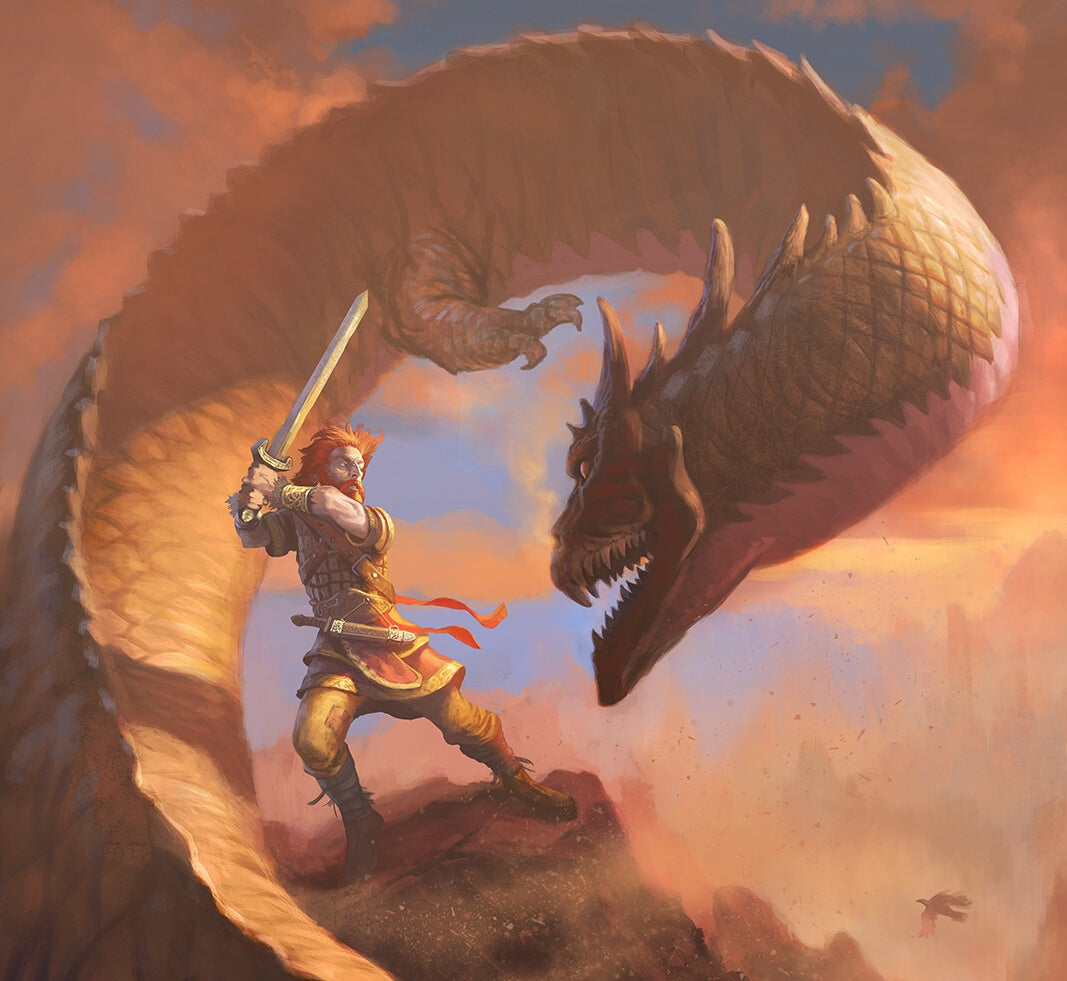Names as George R.R. Martin, author of the Game of Thrones novels and J.R.R. Tolkien, author of The Lord of the Rings are commonly known today. They also share much more similarities than one would think, as they both drink deep from the Volsunga Saga.

George R.R. Martin brilliantly integrates material as diverse as the history of the War of the Roses (particularly as Shakespeare interpreted them), legends of the Mongols, and the history of Byzantium. But his secret is Viking stories. That's the key ingredient. Over the course of two centuries, the results have never really varied. Almost nobody reads it today, but if you want to make a mega-hit, you steal from the Volsunga Saga.

George R.R. Martin
You may never have heard of it, but if you consume popular culture of any kind, you've heard stories from the Volsunga Saga. At its heart is the story of Sigmund and his son Sigurd, descendants of the king of the Volsungs and, further back, Odin. The saga is a story of terrible violence and passion. After Sigmund's father is killed, Sigmund and his brothers are locked into stocks in the forest. Every night a wolf comes and eats one of the brothers. The way Sigmund survives is by putting honey on his mouth, so that when the she-wolf comes to lick it off, he catches her tongue in his mouth and bites it off, slaying the wolf.
Other stories will be more familiar, such as Sigurd fighting a dragon who guards an enormous hoard of gold belonging to dwarves. Even the giant company of the mouse borrowed from the saga when it depicts in one of its movies a charming prince rescuing the damsel in distress from a magic castle, or in its original as Sigurd rescuing the – originally not defenseless at all, being a Valkyrie – Brynhild, from a ring of fire.

Any story with magic swords, gold hoards, proud warrior women, strong-armed dwarves, evil dragons — all of them owe a debt to the original legends contained in the Volsunga Saga. Despite or perhaps because their inherent roots in the Norse Religion, the sagas have a tendency to fuse easily with Christianity, who historically appropriated many of the traditions from other religions. Another early example being the Nibelungenlied, from the thirteenth century, which fused stories of Old Norse sagas with those of Christian knights, and was wildly popular.
The ancient stories have an odd way of turning up at essential moments of modernity. The Nibelungenlied was the subject of The Ring of the Nibelungen by Richard Wagner, widely considered the greatest achievement of modern opera. But the greatest modern interpreter of the Norse material — and a man who incidentally refused to permit a German edition of his works during the Nazi period — was J.R.R. Tolkien.
The Lord of the Rings, if you count the series as one big novel, is the second most popular novel in history, with worldwide printings of about 150 million copies. Tolkien, besides being a novelist, was also one of the major philologists of his time. He fused stories gathered from a host of Nordic sources, but the Volsunga Saga, and its related work the Elder Edda, were by far the most important. Tolkien could read in Old Norse. He even took some important names straight from the Volsunga Saga.

J.R.R. Tolkien
From Tolkien, the influence of the Volsunga Saga has spread everywhere. And not just in fantasy fiction. The world's biggest MMORPG (massively multiplayer online role-playing game), World of Warcraft, has over seven million subscribers and its world of dwarves and elves and constant battles would have been instantly recognizable to Germanic people a millennium ago. Not to mention the good and old Dungeons and Dragons games, both in the pen-and-paper and the videogames versions. In these games, elves and dwarves are common place and the dragons are even in the name of the games. Without the Norse Eddas and Sagas, none of these would exist.
The persistence of the stories from the Volsunga Saga is even more incredible when you consider that the groups of fans who follow one strain don't necessarily follow the others. The people who watch Game of Thrones are not usually the same people who are going to the Wagner's Ring of the Nibelungen opera, even though both are elaborations of the legends originally found in the same source material.
The Norse Eddas and sagas inspired generations of storytellers and game designers, creating a branch of entertainment that speaks to a primal part of the human soul, a part that will never have enough of mighty warriors fighting evil monsters.
Sources:
Lee M. Hollander (1962) The Poetic Edda. 15th. edition. Texas, USA: University Research Institute of the University of Texas. ISBN 978-0-292-76499-6
Jesse Byock. 2005. Snorri Sturluson, The Prose Edda. 1st. edition. London, England: Penguin Books Ltd. ISBN-13 978-0-140-44755-2
Simek, Rudolf. 2008. Dictionary of Northern Mythology. Translated by Angela Hall. BOYE6. ISBN-13 978-0859915137
Anthony Faulkes. 1995. Snorri Sturluson, Edda. 3rd. edition. London, England: Everyman J. M. Dent. ISBN-13 978-0-4608-7616-2
Daniel McCoy. 2016. The Viking Spirit: An Introduction to Norse Mythology and Religion. 1st edition. CreateSpace Independent Publishing Platform. ISBN-13 978-1533393036
J. R. R. Tolkien. 2014. The Lord Of The Rings - 60th Anniversary (Boxed Set). Harper Collins. ISBN-13 978-0007581146
Marche, Stephen. 2014. Esquire Magazine












